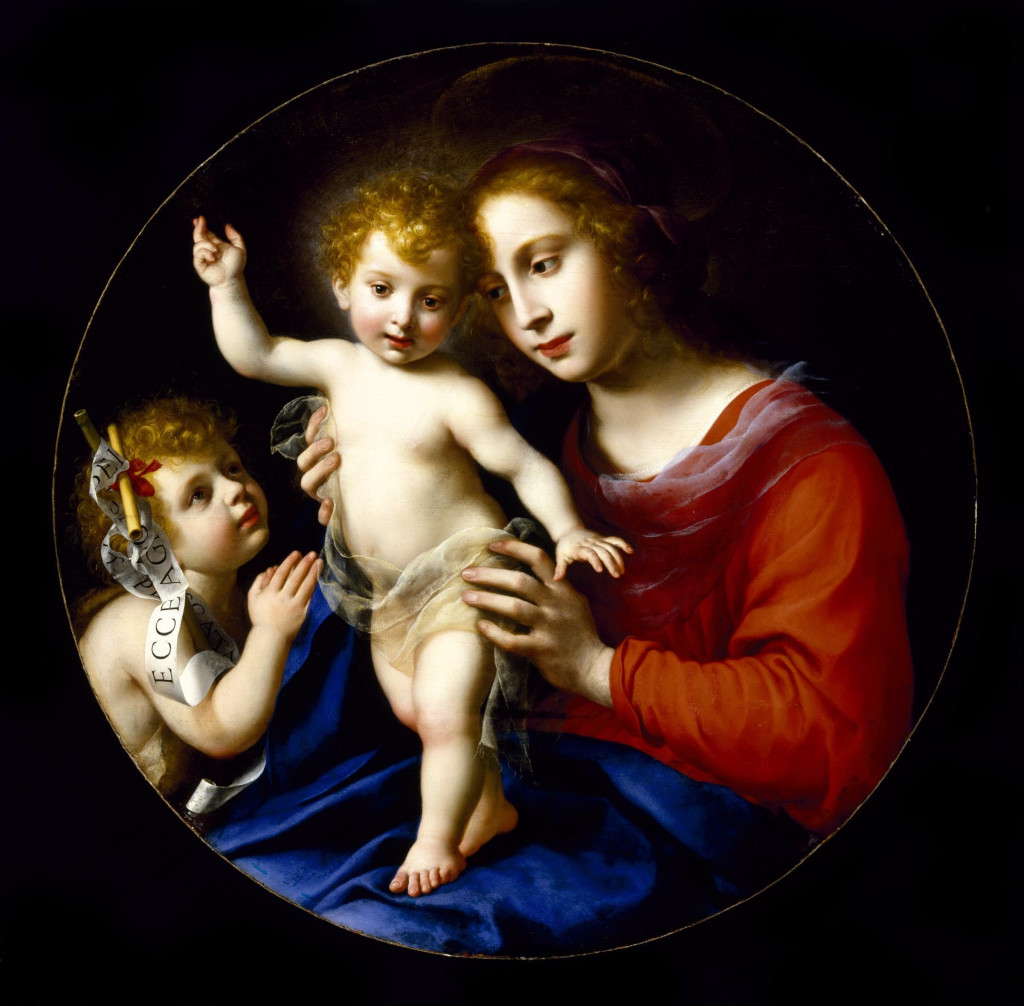【Well-Endowed Customer and Young Female Escort】
Babies in Art
First Person

Carlo Dulci,Virgin and Child with the Infant Saint John the Baptist, 1635.
Babies in art mostly look nothing like babies in life. This is especially true of the baby Jesus, but also of babies more broadly, and this is true even, and maybe most noticeably, in paintings and sculptures that are, apart from the oddly depicted babies, realistic. Often babies are depicted with the proportions of small adults: their limbs are relatively longer than baby limbs, and their heads are not as relatively large as baby heads; in real life, babies have heads so large and arms so short that they can’t reach their arms beyond their heads. But one almost never sees this in a museum. I am told, also, that a major problem through the centuries for artists depicting the baby Jesus has been the question of what to do about the Lord’s penis.

Jan de Bray,The Adoration of the Shepherds, 1665.
Recently, though, the baby and I saw several realistic paintings of babies. One of these was by the seventeenth-century artist Jan Steen, who is most famous for his paintings of chaotic, messy households—households as they really were, one imagines. Also we saw a Jan de Bray painting titled The Adoration of the Shepherds, which depicted the infant Jesus looking like a real infant; Adoration was hung near Still Life with Strawberries by Adriaen Coorte. All the paintings were in the same room, which had, as the focal point of the gallery, a very large painting of a cow by Paulus Potter. It had been radical at the time, the gallery copy noted, for a simple cow to be the subject of such attentive portraiture.
So there was a moment, in Dutch painting, when the problem of how to depict babies was solved by having them appear as they in fact are. But I think I’ve discovered a more pervasive and enduring realistic depiction of babies, though not in depictions of actual babies but instead in depictions of the Virgin Mary. I had often wondered about the distinctive tilt of Mary’s head in so many paintings and sculptures. It’s a very particular, recognizable tilt, and you see it again and again, across time and geography. The tilt is usually coincident with Mary holding but not necessarily looking at the baby Jesus. In iconography, I imagine, the tilt has its own prescribed meaning. But that’s an insufficient explanation of the tilt, of why it came to be, of why it makes sense. It’s not a tilt I’ve ever observed in women in real life. But after I held my young baby again and again and again and again and again, I very clearly recognized the angle of the tilt of Mary’s head; it is the tilt of the head of babies who are just beginning to develop the strength of their neck muscles. When I hold my baby, she holds her head at that exact same angle.
This piece is an excerpt from Little Labors by Rivka Galchen, out this month from New Directions.
Rivka Galchen is the author of the novel Atmospheric Disturbancesand the collection American Innovations. She lives in New York City.





Related Articles